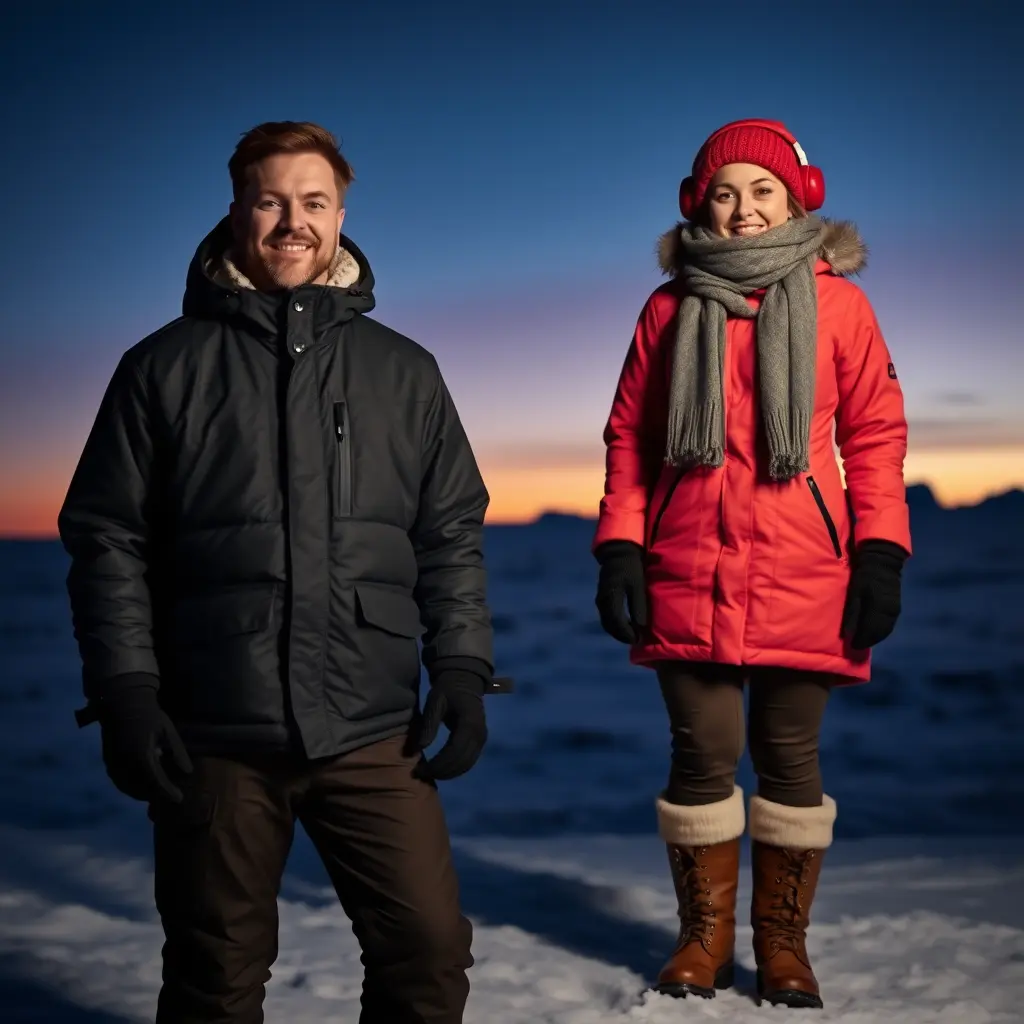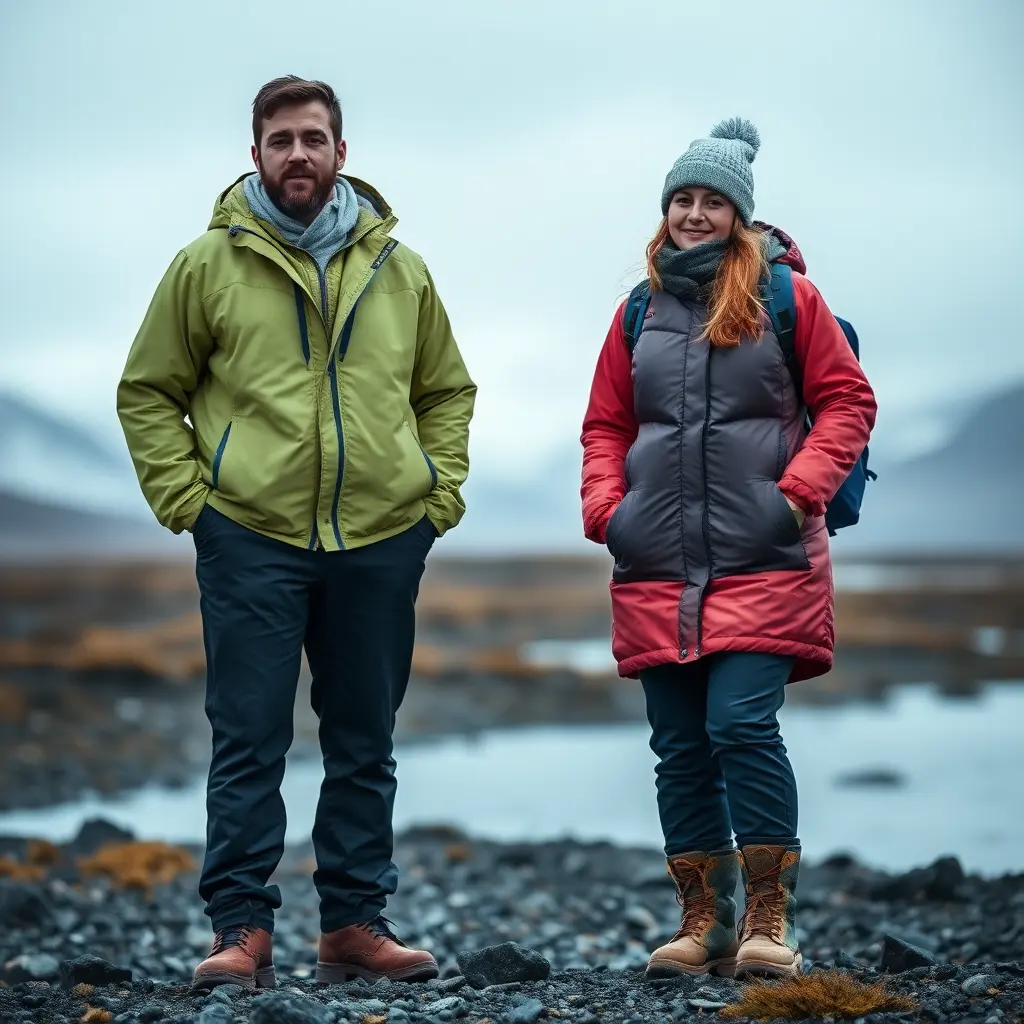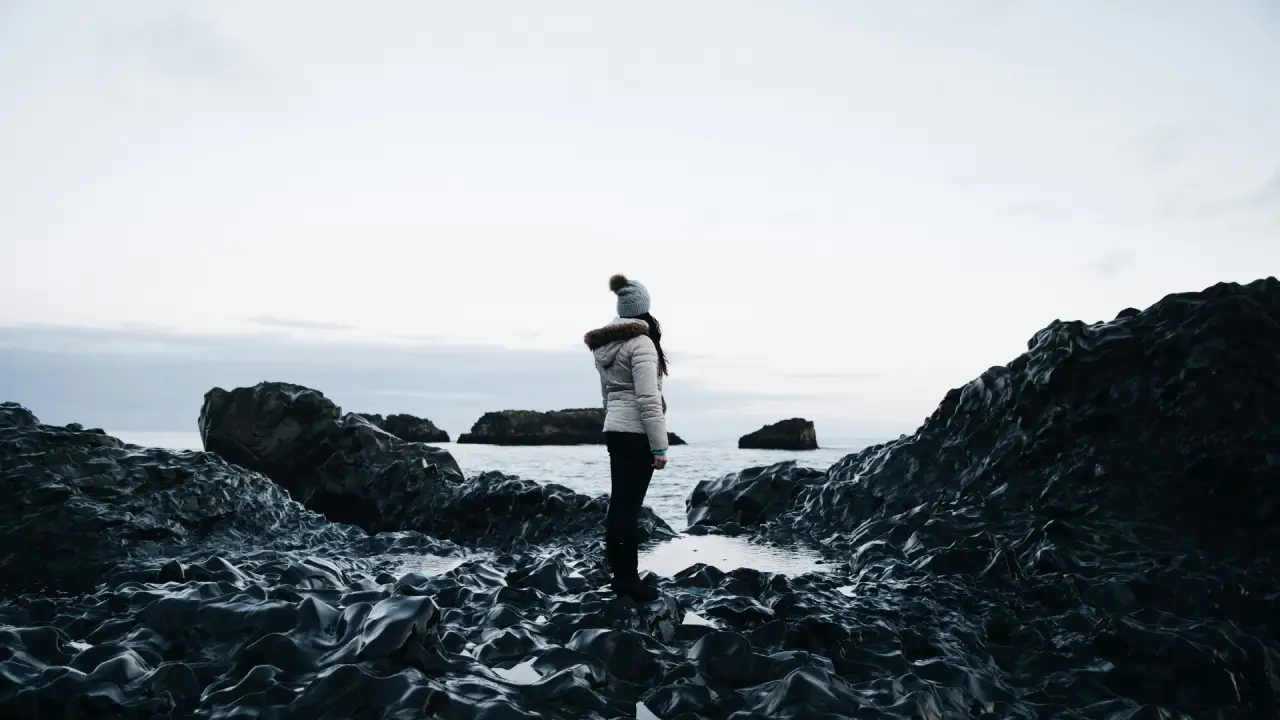In Iceland, you should wear warm layers, waterproof outerwear, and sturdy boots throughout the year due to its unpredictable weather. Each month in Iceland brings unique weather conditions, from freezing winter temperatures to cool, breezy summer days. Dressing appropriately for the varying climate is essential to stay comfortable while exploring this rugged, beautiful country.
What To Wear in Iceland from January To December?
Iceland’s climate is known for its unpredictable weather, and dressing properly year-round is essential for staying warm and comfortable. Whether you’re visiting Reykjavik, exploring glaciers, or relaxing in hot springs, your clothing choices will significantly impact your experience. Here’s a detailed month-wise guide to help you pack the right clothes for Iceland from January to December.
What To Wear in January in Iceland?
January is the coldest month in Iceland, with temperatures often hovering around freezing. Strong winds and snow are common, so prioritize insulation and waterproof clothing.
- Essential Clothing: Thermal base layers, fleece jackets, insulated coats, waterproof pants, thick wool socks.
- Footwear: Waterproof, insulated boots with good grip.
- Accessories: Warm hats, scarves, gloves, and earmuffs to protect from windchill.

Tips for Staying Comfortable
Layering is key in January, and don’t forget to bring windproof outerwear.
What To Wear in February in Iceland?
February continues with cold and wintry weather. The daylight increases, but the conditions remain challenging for travelers.
- Essential Clothing: Thermal base layers, mid-weight fleeces, windproof and waterproof outer layers, insulated pants.
- Footwear: Waterproof, warm boots with slip-resistant soles.
- Accessories: Wool hats, gloves, and scarves.
Tips for Staying Comfortable
Waterproof gear is crucial for February’s slushy conditions.
What To Wear in March in Iceland?
In March, temperatures start to rise slightly, but it’s still cold and windy.
- Essential Clothing: Layered clothing with thermal shirts, warm sweaters, and waterproof jackets.
- Footwear: Insulated boots for cold, wet conditions.
- Accessories: Windproof hats and gloves, with a scarf for added protection.
Tips for Staying Comfortable
March can still be snowy, so bring durable and waterproof gear.
What To Wear in April in Iceland?
April marks the beginning of spring, with milder weather but occasional cold snaps.
- Essential Clothing: Light thermal base layers, a rain jacket, and medium-weight pants.
- Footwear: Waterproof hiking shoes or boots for rainy days.
- Accessories: A light beanie or hat for windy days.

Tips for Staying Comfortable
Rain protection is crucial in April, so always pack waterproof outerwear.
What To Wear in May in Iceland?
May is one of the milder months, with warmer weather and longer daylight hours.
- Essential Clothing: Lightweight layers, long-sleeve shirts, a fleece jacket, and a raincoat.
- Footwear: Comfortable hiking boots, preferably waterproof.
- Accessories: A light scarf or headband for chilly breezes.
Tips for Staying Comfortable
Prepare for sudden rain showers with water-resistant clothing.
What To Wear in June in Iceland?
June brings warmer temperatures and nearly endless daylight with the midnight sun.
- Essential Clothing: Breathable base layers, light jackets, and waterproof pants.
- Footwear: Comfortable walking shoes or light hiking boots.
- Accessories: Sunglasses and a light windbreaker.
Tips for Staying Comfortable
Layering is still important in June due to sudden temperature drops.
What To Wear in July in Iceland?
July is the warmest month in Iceland, but temperatures rarely exceed 15°C (59°F).
- Essential Clothing: T-shirts, light sweaters, and a rain jacket.
- Footwear: Sturdy hiking boots or walking shoes.
- Accessories: Sunglasses and a sun hat.

Tips for Staying Comfortable
Always have a waterproof jacket on hand for unexpected rain.
What To Wear in August in Iceland?
August remains mild and pleasant, making it ideal for outdoor activities.
- Essential Clothing: Light layers such as t-shirts, long-sleeve shirts, and a medium-weight jacket.
- Footwear: Comfortable waterproof hiking shoes.
- Accessories: A light scarf or headband for cool evenings.
Tips for Staying Comfortable
Pack layers, as temperatures can drop quickly in the evenings.
What To Wear in September in Iceland?
In September, autumn arrives with cooler temperatures and more frequent rain.
- Essential Clothing: Long-sleeve shirts, a warm jacket, and waterproof pants.
- Footwear: Waterproof hiking boots with good traction.
- Accessories: A warm hat and gloves for cold mornings and evenings.
Tips for Staying Comfortable
Windproof and waterproof gear is essential to combat the autumn weather.
What To Wear in October in Iceland?
October is chilly and often rainy, with a significant drop in daylight.
- Essential Clothing: Thermal layers, a fleece jacket, and a waterproof coat.
- Footwear: Waterproof, insulated boots.
- Accessories: Warm hats, gloves, and scarves.
Tips for Staying Comfortable
Prepare for shorter days and rain with warm and water-resistant gear.
What To Wear in November in Iceland?
November signals the start of winter, with colder temperatures and increased snow.
- Essential Clothing: Insulated jackets, thermal pants, and warm sweaters.
- Footwear: Waterproof, insulated boots for snow and ice.
- Accessories: Wool hats, mittens, and scarves for added warmth.
Tips for Staying Comfortable
Snow gear and waterproof clothing will keep you comfortable in the icy conditions.
What To Wear in December in Iceland?
December is cold, dark, and snowy, making warm clothing a necessity.
- Essential Clothing: Heavy-duty thermals, an insulated coat, and thick wool layers.
- Footwear: Insulated boots with strong traction.
- Accessories: Heavy-duty gloves, hats, and a wool scarf.
Tips for Staying Comfortable
Invest in windproof, waterproof layers to handle the harsh winter conditions.
What to Wear in Iceland by Season?
Iceland’s weather is known for being unpredictable, and dressing appropriately for each season is essential. Here’s a guide to help you choose the right clothing based on Iceland’s seasonal changes.
Dressing for Winter in Iceland (December to February)
Winter in Iceland is cold, dark, and often snowy, with temperatures hovering around freezing. Strong winds and icy conditions require layered and insulated clothing to stay warm and dry.
- Essential Clothing: Thermal base layers, heavy wool sweaters, and insulated, waterproof coats.
- Footwear: Waterproof, insulated boots with strong traction for icy streets.
- Accessories: Thick wool hats, scarves, and gloves to protect against wind and cold.
Features to Look For
- Windproof and waterproof materials are crucial.
- Thermal layers help retain body heat.
Dressing for Spring in Iceland (March to May)
Spring in Iceland is still chilly, with frequent rain and fluctuating temperatures. As the snow melts, waterproof and windproof clothing becomes more important.
- Essential Clothing: Light thermal layers, waterproof jackets, and sweaters.
- Footwear: Waterproof hiking boots for exploring during the rain.
- Accessories: Light hats and gloves for cooler mornings and evenings.
Features to Look For
- Waterproof gear to handle rain.
- Layered clothing for warmth during cold spells.
Dressing for Summer in Iceland (June to August)
Iceland’s summer is mild, with temperatures rarely going above 15°C (59°F). While it’s warmer, you should still prepare for rain and wind, especially during outdoor activities.
- Essential Clothing: Light layers, t-shirts, a fleece jacket, and a waterproof coat.
- Footwear: Comfortable walking shoes or waterproof hiking boots.
- Accessories: Sunglasses and a light scarf for windy days.
Features to Look For
- Breathable layers for comfort during hikes.
- Lightweight rain jackets for unexpected showers.
Dressing for Autumn in Iceland (September to November)
Autumn brings colder temperatures and frequent rain, with winds picking up as winter approaches.
- Essential Clothing: Warm sweaters, waterproof outer layers, and medium-weight jackets.
- Footwear: Waterproof hiking boots with good grip for slippery trails.
- Accessories: Warm hats, scarves, and gloves to combat the chill.
Features to Look For
- Wind-resistant materials to protect against strong gusts.
- Insulated outerwear for fluctuating temperatures.
FAQs On What To Wear in Iceland
You should wear thermal base layers, insulated jackets, and waterproof outerwear in Iceland during winter. It’s crucial to also pack warm accessories such as wool hats, scarves, and gloves to protect against the cold and wind.
Yes, waterproof clothing is essential in Iceland year-round. The weather is highly unpredictable, and rain, snow, or sleet can occur at any time, especially during the spring, autumn, and winter months.
You can wear regular hiking boots, but it’s recommended that they be waterproof and have good traction. Iceland’s terrain can be wet, muddy, or icy depending on the season, so sturdy boots will help keep your feet dry and provide stability.
You should pack light layers for summer in Iceland, but also bring a warm jacket and waterproof outerwear. Even during summer, temperatures can drop, especially in the evenings, and rain is common.




